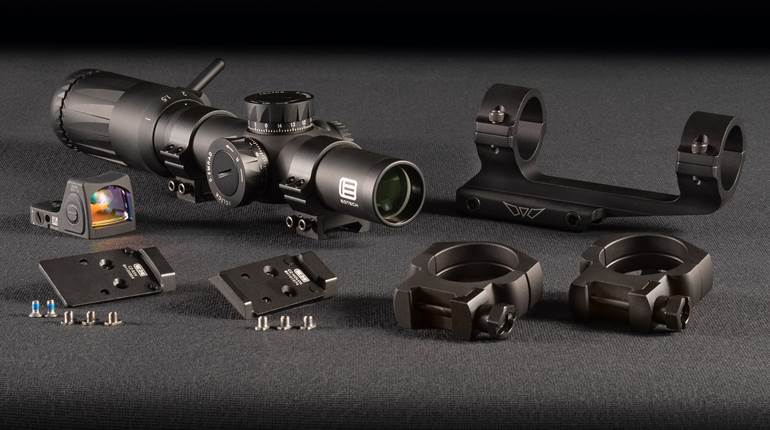
The Ruger MAX-9 is the latest in a wildly popular crop of micro-compact carry pistols chambered in 9 mm Luger and accepting at least a 10-round magazine—a category that one might assume was single-handedly created by the SIG Sauer P365 or Springfield Armory Hellcat.
In reality, such pistols have been with us for some time, with the leader being the humble and affordable Kel-Tec P11 designed by NRA Golden Bullseye Pioneer Award recipient George Kellgren and dating to about 1995. Taurus, under the leadership of then-CEO Bob Morrison (another Golden Bullseye Pioneer Award winner), jumped into the category with its bargain-priced PT–111 Millennium, which was introduced in 1997.
Offerings in the current generation are certainly less bulky and more refined than the decades-old Taurus, but it and the Kel-Tec set the pattern for a new generation of double-action-only or striker-fired guns. The previous generation fell out of vogue due to long, heavy double-action trigger pulls, in stark contrast to the far more manageable trigger of the P365 or the blade-in-trigger safeties on the striker-fired Springfield and the new Ruger.
Also, at that time, there were restrictions in place on magazine capacity—until Bill Clinton’s so-called “assault weapons” ban sunset in 2004, thanks to the NRA—so 10 rounds were as many as you were going to get in a new-production handgun. That led to single-stack guns such as the Kahr P9, Ruger LC-9, Smith & Wesson Shield, Springfield XD-S, Glock G43 and others being top picks for 9 mm carry guns. It seems those wanting carryable 9 mm guns were willing to live with magazine capacities of eight rounds or fewer as most states passed Right-To-Carry laws.
The trick for more recent introductions has been getting a double-column magazine as thin as possible. Whether it’s called a semi-double stack or makes its transition high enough in the grip frame to reduce bulk, they are not the full-width, double-column type such as those found inside the brick-like Glock G26.
The other feature to note is that the MAX-9 comes out of the gate “optics ready.” Essentially, nearly every new handgun introduced this year, save for single-action revolvers and some M1911s, has the capacity to accept a micro red-dot (MRD) sight onto its slide from the factory. I have no doubt this trend will continue, and, in fact, we have plans for future coverage intended to demystify the complex landscape of MRD sights and the pistols designed to accept them. And it’s not just on high-end guns, as the EAA Girsan, Stoeger STR-9, Taurus G3 T.O.R.O. and SCCY CPX are available in optics-ready versions.
As more and more guns come offered packaged with a red-dot (the easiest route to being optics-ready) or at least able to accept them, we are seeing companies that make or import guns getting into the MRD business for themselves. The Hex Wasp MRD on top of the Ruger on our cover is a case in point. This is an optic imported by Springfield Armory, and it is not only being fit to the company’s optics-ready guns but is also being sold aftermarket to consumers. Springfield saw how many Shield MRDs it was selling as packages and decided to bring in its own device made to its specifications. Once an anomaly, optics-ready is here to stay.





































